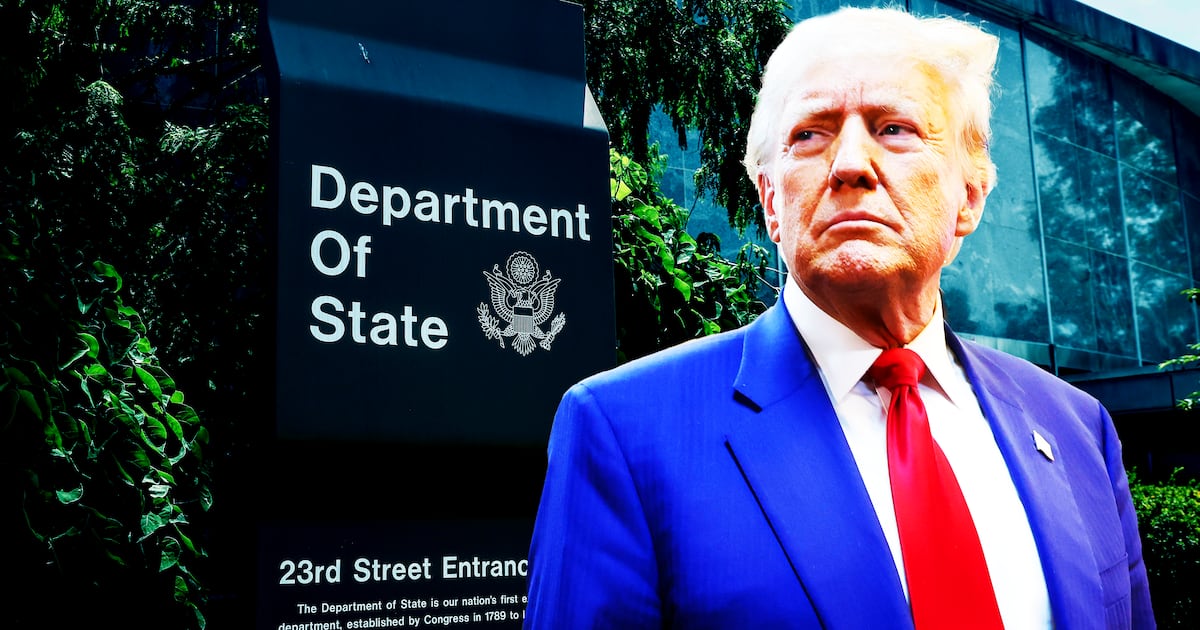Edward Grant Barrow, born in a covered wagon, helped invent modern sports by building the Yankee baseball dynasty, making their famed Murderers’ Row truly murderous, and starting every game with the national anthem.
This Yankee executive who pioneered the modern mix of capitalism and patriotism, of sport and spectacle, had pioneering roots. Born in 1868 as his family moved West to Nebraska, Barrow sported a middle name honoring America’s post-Civil War hero, U.S. Grant. A rare manager who was ready to use his fists and boost his product not just organize efficiently, he had a colorful career pitching for his local team, selling newspapers, promoting boxing, producing theatrical shows, managing hotels, even hawking an electric-car.
But his defining mission involved feeding America’s need for heroes on the ballfield not the battlefield. The normally prickly sportswriter Joe Williams would write: “The [Babe] Ruths had done the hitting, the [Herb] Pennocks the pitching, the [Bill] Dickeys the catching, and the [Tony] Lazzeris the fielding, but it was Barrow who knitted the organization together, gave it a pattern and a far-seeing program... That’s why” Barrow’s hiring in 1920 “represents the best deal the Yankees ever made.”
Still, those crisising in midlife take heart. When Barrow was 52-years-old he was a respected baseball executive yet not a likely candidate for the not-yet-established Hall of Fame. He had bounced around as the sport took off—and sports became an American obsession. He had managed teams and even led rival leagues that tanked. He signed the superstar shortstop Honus Wagner in 1896. He helped launch Harry M. Stevens, the definitive baseball concessionaire.
And, as the Boston Red Sox general manager, he had shifted Babe Ruth from the pitcher’s mound to the outfield, later boasting: “Many people have said that” with that move “I changed the whole course of baseball.” But the Sox owner Harry Frazee, had foolishly sold Babe to the Yankees for $100,000 in 1918. Having warned “You ought to know you’re making a mistake,” two years later Barrow followed the Babe to New York—and American immortality.
Two great partnerships defined the Yanks in those years—and saved baseball from the 1919 Black Sox gambling scandal. A back office partnership united the gruff, all-American Barrow with his Germanic, generous new boss, Jacob Rupert.
A former Congressman and second-generation beer magnate, Rupert spent big money to buy players, build Yankee Stadium, and make the Yankees great. This dynamic office duo assembled the first legendary Yankee team—the 1920s edition—with its “Murderer’s Row”—itself a unique group exercise in cooperative excellence, starring baseball’s greatest one-two punch: Babe Ruth and Lou Gehrig.
Ruth and Gehrig were as dissimilar as Barack Obama and Donald Trump. Ruth, a graduate of the tough Baltimore streets, was flamboyant, bombastic, undisciplined, as showy as the towering home run he foretold with his finger point toward the bleachers in the 1932 World Series against Chicago.
Gehrig, a graduate of Columbia University, was softer, insecure, impressively talented too—yet as reliable as his 2,130 consecutive-game-playing streak. Typically, in that amazing year of 1927, Babe would chew up the scenery with his record 60 homeruns. But Gehrig won the Most Valuable Player award, with a .373 batting average, 47 homers, 175 RBIs to Ruth’s .356 average with 164 ribbies.
Although their relationship eventually soured, the two fed off each other’s success in the kind of symbiosis that proves that 1 plus 1 can sometimes make 11 not 2. Thanks to Ed Barrow, a broader team effort enhanced their power. Being surrounded by Earle Combs, who hit .356 and scored 137 runs, Tony Lazzeri, who hit .308 with 102 RBIs, and Bob Meusel’s .337 with 103 RBIs brought out the best in all of them.
More practically, it prevented cowardly pitchers from pitching around any one of them—and psyched out opponents. The Washington Senators’ first baseman, Joe Judge, muttered in July: “Those fellows not only beat you but they tear your heart out. I wish the season was over.”
Collectively, the 1927 Yankees batted .307, had a record setting slugging percentage of .489, enjoyed great pitching seasons from Waite Hoyt (22-7, 2.63 ERA) and Herb Pennock (19-8, 3.00 ERA), and swept the Pittsburgh Pirates in 4 games in the World Series.
Today, “Murderers’ Row” is the gold standard for offensive lineups—and evokes those ’27 Yankees. Actually, a less impressive pre-Barrow lineup in 1918 prompted a sportswriter to coin the term. But Barrow’s brilliance, with Rupert’s rubles, made the Yankee batting order truly lethal. Barrow’s Yankees would win 14 pennants and 10 World Championships in his 26 Yankee years.
“I say there has never been a smarter baseball man than Mr. Barrow,” the eventually more famous baseball executive Branch Rickey would say. “He knows what a club needs to achieve balance… I, perhaps, can judge the part; but Mr. Barrow can judge the whole.”
Barrow not only helped assemble the teams, he led them effectively, along with the peppery manager Miller Huggins. “You're the manager, and you'll not be second guessed by me,” Barrow assured Huggins. “Your job is to win; mine is to get you the players you need to win.”
It takes a tough egotist to manage monumental egos like Babe Ruth. In Boston, Frazee called Barrow “Simon,” comparing him to the vicious Simon Legree of Uncle Tom. During those years, Barrow had confronted the Babe—even busting into the hard-partying superstar’s hotel room early one morning at 6 a.m.—to find the soon-to-be Bronx Bomber who terrified pitchers had just returned, way after curfew, cowering under the covers, still in street clothes. Barrow made it clear who was the boss—threatening to thrash Ruth. This harshness made enemies: Eleanor Gehrig never forgave Barrow for suggesting Lou Gehrig move on when he got sick in 1937. But this grit also made the team flourish.
Barrow understood that baseball was a business. He was a tough negotiator who intimidated Gehrig at salary time and infuriated the Babe. Waite Hoyt called Barrow a “baseball man” with unparalleled “business acumen: He knew where to look for leaks in the cashbox, could estimate his costs within a few dollars, and was a sharp trader.”
But this uber-capitalist and patriot also understood that baseball was sport, with all the whimsy, wonder, majesty and magic that word once conveyed. Barrow made the Yankees appear as noble as the Knights of the Round Table, as patriotic as the Minutemen. Barrow and Rupert were the ones who first put numbers on the players’ backs, understanding that Americans wanted to single out particular players for blessing—and cursing. Barrow also initiated the ritual of retiring uniform numbers, starting with Lou Gehrig’s premature retirement in 1939.
Barrow was one of the first execs to allow fans to keep foul balls they caught. That’s one of those little acts of generosity that pays off big time. It has thrilled thousands of lucky ball-grabbers while stirring the childlike hopes of millions when that ball arcs toward us.
Another minor Barrow move that took on major significance was his April, 1941 decision to have the national anthem played at the start of every game. With America debating entering World War II, Barrow wanted to steep baseball in the growing patriotic sentiments. As we well know, that association of sports and nationalism continues.
Until he retired in 1946, Barrow continued doing what he did best, general managing one of America’s greatest collections of athletic talents. With the signing of Joe DiMaggio in 1934 for $25,000, Barrow showed he wasn’t simply assembling a great team—he was building a dynasty.
The Washington Post already christened today’s homer-hitting Yankees “a modern Murderers’ Row.” We now know that in addition to superstars like Aaron Judge and George Sanchez, the Yankees will need a brilliant behind-the-scenes baseball man—or woman—to match their team’s past glory.
FURTHER READING
Marty Appel, Pinstripe Empire: The New York Yankees from Before the Babe to After the Boss (2014)
Daniel R. Levitt, Ed Barrow: The Bulldog Who Built the Yankees’ First Dynasty (2008)
Leo Trachtenberg: The Wonder Team: The True Story of the Incomparable 1927 New York Yankees (1995)






